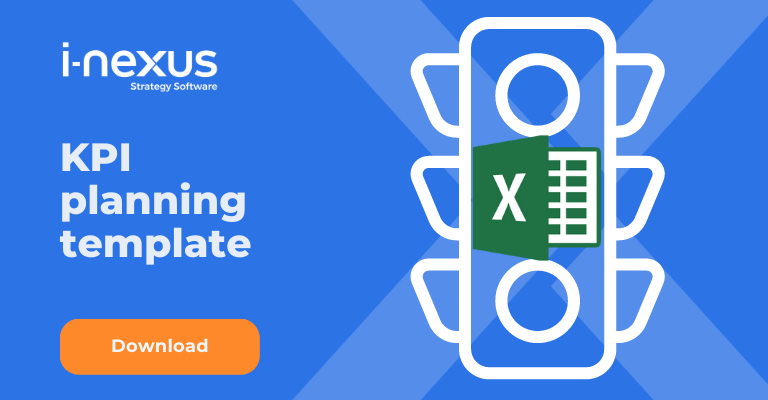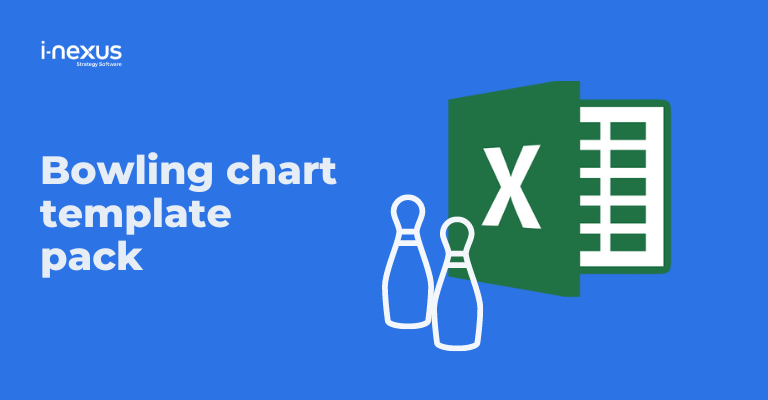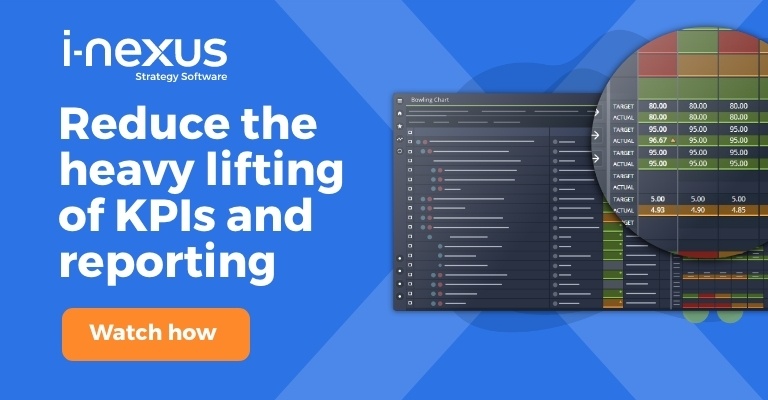Key Performance Indicators are staples in ensuring you can track your plans' performance - but what do you need to know about them?
Written by: James Milsom, Head of Marketing
Key Performance Indicators (KPIs) are staples of effective performance management.
KPIs play a crucial role in determining and explaining a company's progress in meeting its strategic and operational goals.
KPIs help paint the picture which answers the question – “are we going to hit our targets?”, and give the foundation to decide what actions must be taken to get things back on track.
But, what about metrics? It may look like splitting hairs when considering KPI v metrics. To fully experience the value of KPIs, it's crucial to understand how they differ from metrics, their importance, and examples to bring everything into clarity.
Read on to learn about the basics of KPIs and six examples to create your own.
What is a KPI?
Key Performance Indicators (KPIs) are the measurable benchmarks or metrics against defined targets. You use them to gauge your company's critical goals, objectives, and initiatives. The operative word "key" means they are crucial in your company.
KPIs are crucial in measuring the successes and failures of your plans, which leads to the use of dedicated performance tracking approaches such as the bowling chart, which uses a traffic light approach to visually prompt attention to poor KPI performance.
For instance, suppose your goal is to boost sales by 20% over the next year. Your KPIs will be things like customer churn, new client acquisition, and upselling success rate
The primary characteristics of KPIs are:
- Quantitative: KPIs can be in the form of numbers
- Practical: They must integrate well with existing company processes
- Actionable: KPIs should be practically applicable to effect the desired change.
What is a metric?
While Key Performance Indicators help you determine your progress towards defined goals, metrics measure your company's overall health. They aren't as important as KPIs, even though you may loosely tie them to specific objectives.
That's why you hear about the make-me-feel-good vanity metrics such as the number of social media likes on a post. But don't demean metrics - they can still give you valuable business insights and data.
For instance, you can track your site's visitors as a metric. But if you tie this metric to a specific key business objective, you have a KPI.
KPIs v metrics
Metrics and KPIs get confused frequently, but there are differences.
While all KPIs are metrics, not all metrics are KPIs. Before anything else, you must first determine the metrics for your business that qualify as KPIs.
Remember that indicators don't necessarily have to be financial. Still, they play an essential role in directing the various marketing vehicles for management.
Another differentiating factor between a KPI and a metric is that a metric is a measurement, but a KPI gives context or direction. For example, a metric can be total revenue, sales, or customers.
A KPI adds substance to the metric, for example, ratios and percentages. You transform metrics into KPIs when you put them into their proper context within the organization or industry (aligning metrics to your goals).
Why are KPIs important to performance management?
KPIs are crucial for the day-to-day running of a business as they help in tracking projects. They also give direction that informs a company on how to deliver its strategic plan. More specifically, key performance indicators help your company to:
1) Monitor the business's health
A handful of KPIs can give you insights into your company's vital signs.
Just concentrate on a few critical KPIs in each of four areas - customers, employees, processes, revenue - to enable you to put more effort where it is needed.
2) Measure progress over time
With the right KPIs, measuring your progress towards long-term goals is simple.
At the start of every year and quarter, set targets for KPIs like Gross Margin, Revenue, number of employees, and number of locations. Then add weekly targets to determine the progress towards those goals.
3) Make the necessary adjustments to remain on track
You need leading indicators to alert you when you're in danger of missing your targets before it's too late.
Leading indicators help you predict the future to stay on track for your desired results.`
4) Solve problems or make the most out of opportunities
The right combination of KPIs provides you with the correct information to solve problems or handle opportunities.
For example, when you have a new product in mind, you can test it with a few customers to validate the business model before launching it.
5) Analyze patterns over time
You'll detect patterns in your numbers as you keep measuring the same KPIs.
These can help you predict the slowest time in your business.
You can probably use that time to update business systems or conduct a company-wide training initiative.
Examples of Key Performance Indicators
Here are some examples in various business areas and industries to give you an idea of how you can build your own KPIs:
Manufacturing organizations
- On-time delivery
- Customer return rate
- Overall equipment (OEE)
- Changeover time
- Planned Maintenance Percentage (PMP)
- Total cycle time
- Availability
- Scrap
- Capacity utilization
- Yield
- Production schedule attainment
- Throughput
Marketing teams
- Customer Acquisition Cost (CAC)
- Return on Investment (ROI)
- Return on Ad Spend (ROAS)
- Conversion rate
- Marketing Qualified Leads (MQL)
- Sales Qualified Leads (SQL)
- Follower Growth
- Lifetime Value of a Customer (LTV)
Call centers
- Average Time to Answer
- Average Idle Time
- Percentage of Calls Blocked
- Average Handle Time
- First Call Resolution (FCR)
- Average Hold Time
- Transfer Rate
- Average Abandonment Rate
Private equity company
They need KPIs to ensure their portfolio of companies is delivering X revenue within Y time.
- Profit Margin
- Cash flow
- Sales conversion rate
- Revenue growth
Project management
- Project schedule
- Current resource allocation
- Estimate project completion
- Labor costs spent per month
- Current development backlog
Portfolio management
- Operational efficiency
- Budget variance
- Time spent on the project schedule
- Count of errors
- Customer satisfaction
- Alignment with strategic goals
- Delivered business value
- Customer satisfaction
Evolving your KPIs and performance management
KPIs are staples of effective business reporting and can cover financial and non-financial information concerning benefits, performance, deliverability, among other factors.
However, disconnected data creates loopholes because you cannot easily access and analyze the information to drive decisions.
Evolving your KPIs and performance management as a whole should begin with a consistent method for tracking. To that end, our bowling chart template (Excel based) is a great way to improve how you're tracking your efforts. Click here for you free copy.
And for those who continue to struggle with not only defining, but capturing data on your KPIs across your teams, there is an easy way to measure, analyze, and optimize your performance.
Watch our on-demand webinar covering the i-nexus bowling chart for more information on why when you use i-nexus to manage the performance of your strategic and operational work, you'll be equipped with KPIs, metrics, and reports on-demand to ensure you always know if everything's going to plan.
Learn more about improving the way you track your performance
Continue exploring how to improve your goal tracking with any of the below:
- Measuring Hoshin Kanri: bowling charts and A3 reports: While Hoshin Kanri is a structured method for formulating, deploying, and executing your strategy, the actual execution and tracking must be supported by using the bowling chart, the metric A3, and the countermeasure A3.
- Spreadsheets v software: Planning, executing & tracking Hoshin Kanri: The power of Hoshin Kanri is well documented, but how can you fast-track success? Spreadsheet templates or software are your options, and these are their pros and cons
- What does it mean to be an agile business?: Take a leap into the future of goal planning, execution, and tracking with this webinar
About the author
Here at i-nexus, I want to help you develop and find easier, more effective ways to deliver more of your goals, with less effort. As part of that, I'm passionate about creating the best content to overcome your challenges. Ask me about Hoshin Kanri and operational excellence guides for free copies.
If you’d like to talk more about strategy execution, reach out to me at james.milsom@i-nexus.com or connect with me on LinkedIn for the latest insights.



.jpg?width=352&name=KPIs%20(3).jpg)

